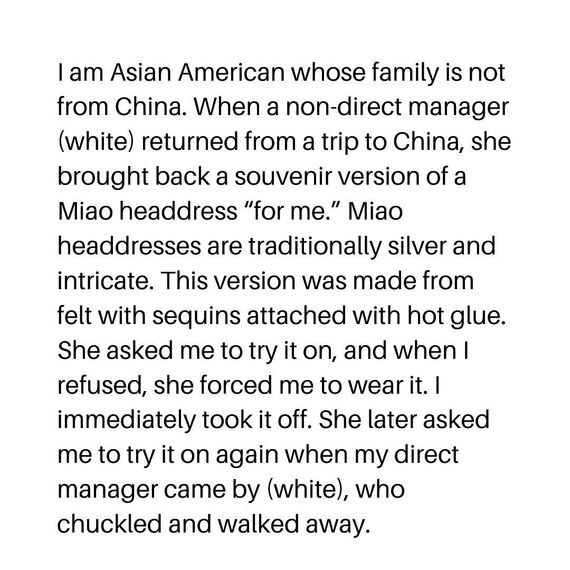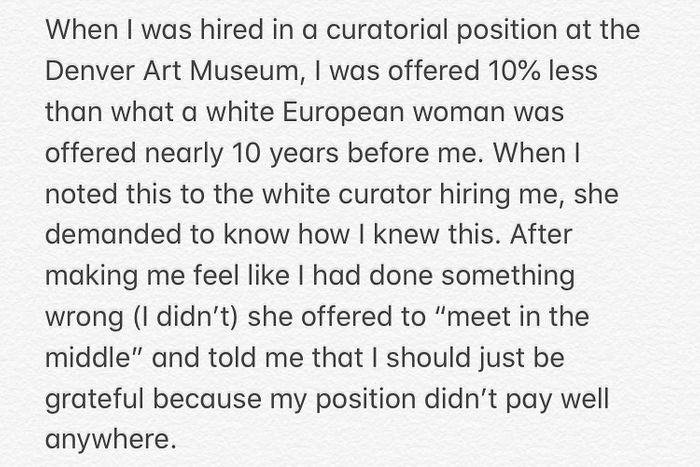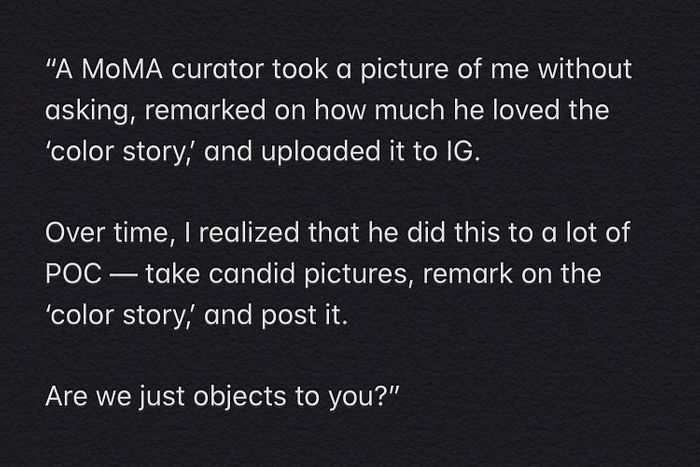
On June 27, the Instagram account @changethemuseum posted one of the anonymous reports of the often dispiriting experiences of working in the almost entirely white art world when you are not white:
“At an SFMOMA all-staff meeting, the white senior curator was giving a presentation about a group of new acquisitions by POC artists. He ended a presentation about new acquisitions by artists of color by saying, ‘Don’t worry, we will definitely still continue to collect white artists.’”
Among the account’s posts, it was pretty typical of the tone-deaf arrogance of arts leadership on display. But this one set in motion actual change: Ten days later, at another staff meeting over Zoom, SFMoMA head curator Gary Garrels — reportedly the person quoted in that post — said it would be “reverse discrimination” to stop collecting the work of white men. A petition calling for his resignation followed, and on July 11, two weeks after the widely shared @changethemuseum post, Garrels resigned, apologetically.
Call that a win for Change the Museum, which was founded earlier this year by a group of artists, curators, and others in and around the art world who are all too familiar with people of authority like this. The art world often prides itself on its progressive ideals, and being open to new ideas, but in no small part because it is mostly funded by an overwhelmingly white patron class, its power structures and its work culture remain steadfastly un-diverse, and — in many ways — unaware.
Since launching on June 16, the Instagram account has shared more than 230 anonymous, first-person testimonies of racial prejudice, discrimination, and harassment happening inside museums and cultural institutions across the United States. They describe microaggressions, macroaggressions, and I-don’t-know-whether-to-laugh-or-cry experiences during meetings, internships and interviews, over emails, and in meetings and other encounters with colleagues, scholars, curators, directors, board members, donors, and HR teams. A month later, the account has more than 20,000 followers and has shared incidents from nearly every major U.S. art museum including the Metropolitan Museum of Art, the Museum of Modern Art, the Whitney Museum of American Art, Solomon R. Guggenheim Museum, Los Angeles County Museum of Art, the National Gallery of Art, among others.
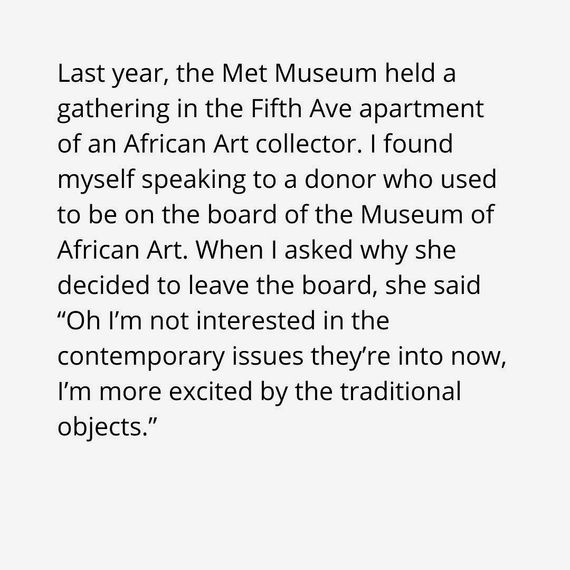
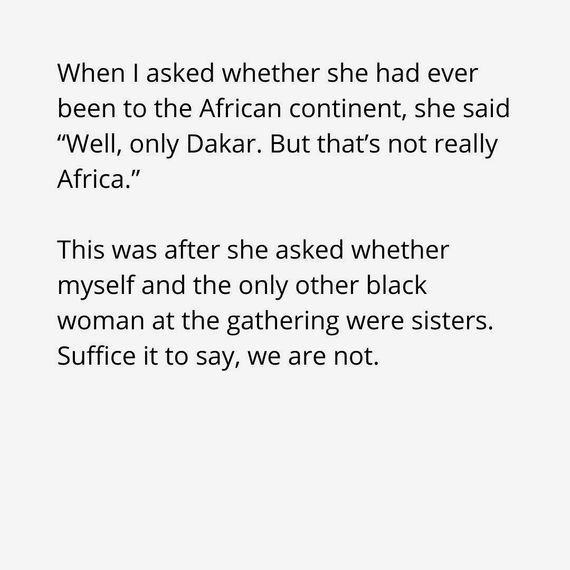
Many of the stories are like these: a senior curator at Guggenheim referring to a Japanese artist as “her sensei.” A manager touching her report’s hair while “saying random words in Spanish.” A director at the Whitney remarking that an exhibition of Latinx artists made him “thirsty for a margarita.” Responding to a proposal about a Black Lives Matter public program with “other lives matter.” Comparing Warren Kanders’s tear-gas investments to young people buying fast fashion. Sitting at a gala next to a drunk donor who tells you “he only dates ‘ethnic women.’” Being called “spicy” or “exotic” or “a mutt” and being told diversity is “a problem for your generation to solve.”
“The goal of the account is to pressure U.S. museums to move beyond lip-service proclamations of anti-racist missions by amplifying anonymously-shared, crowdsourced tales of unchecked racism,” the founders, who wish to remain anonymous, wrote in an email interview. “It felt necessary to hold museum administrations publicly accountable for their actions or inactions. Our hope is that they will be motivated for action. As Audre Lorde said, ‘Your silence will not protect you.’”
Anonymity is essential to the project to avoid reprisals. In July, Change the Museum moved from DM submissions to Google Form in an effort to further protect that. The form requires submitters to confirm that the stories are either personal accounts or are provided with the explicit permission of individuals facing discrimination who could be identified. Change the Museum said so far one institution has reached out to investigate a shared story (they won’t say which). But given how well-read it’s become in the art world, expect more to come.
The account has also surfaced camaraderie among culture workers and community support. “If you’ve read any of these posts you can imagine how painful it may be for many of these individuals to relive these past traumas (or even current or reoccurring traumas),” they wrote. “Seeing their experience reflected in someone else’s story has been really empowering for many of our followers; it is a source of relief and validation to know your incident is not an isolated one.”
It’s not the only online arts accountability campaign either: @show_the_boardroom highlighted the lack of diversity in LACMA’s executive board, trustee, and senior curatorial staff before expanding to other art museums and corporations. There’s @weseeyouwat, which shares stories from BIPOC theater artists, and @blackatsva for Black students and alumni from the School of Visual Arts. Change the Museum also follows and supports @_fortheculture2020, @deathtomuseums, @xsfm0ma, @abetterguggenheim, @aam_accountable, and @vmfa_reform. “Anytime we can help amplify those more focused causes, we do,” they wrote.
Money talks too. “It is an unspoken truth in the museum field,” wrote Change the Museum, “that if something isn’t a line item in the budget it’s not going to happen. If the composition of these boards and major donors better reflected the demographics of the U.S. or their city audience perhaps the actions, practices, and priorities of these institutions would also better reflect those they claim to serve.”
For now, the Change the Museum team see their role as a platform where those facing discrimination can share and connect with others, though they hope to broaden their focus in the future. They’ve received hundreds of submissions from all over the world. “We’re still a small team and keeping on top of the considerable outpouring of stories has admittedly been a challenge,” they wrote. “To that end, we are slowly building our team with trusted colleagues.” And if you look at the prominent artists, journalists, dealers, and curators who follow — and often like — their posts they are clearly getting through, even before they helped draw attention to Gary Garrels’s remarks. They point to Garrels as “one example of someone in a senior position at a museum actually being held accountable for their actions.”
What changes they want to see in museums is a bigger, more complicated question to describe: “We believe that for the changes to be meaningful they are going to be different for each institution. We once heard someone say, ‘You should listen harder to the things you don’t want to hear.’ And that is probably a great place for institutions to start — to actually listen to the concerns of their staff, to truly reflect on their role in a racist system, and to search for strategies of change together.”


